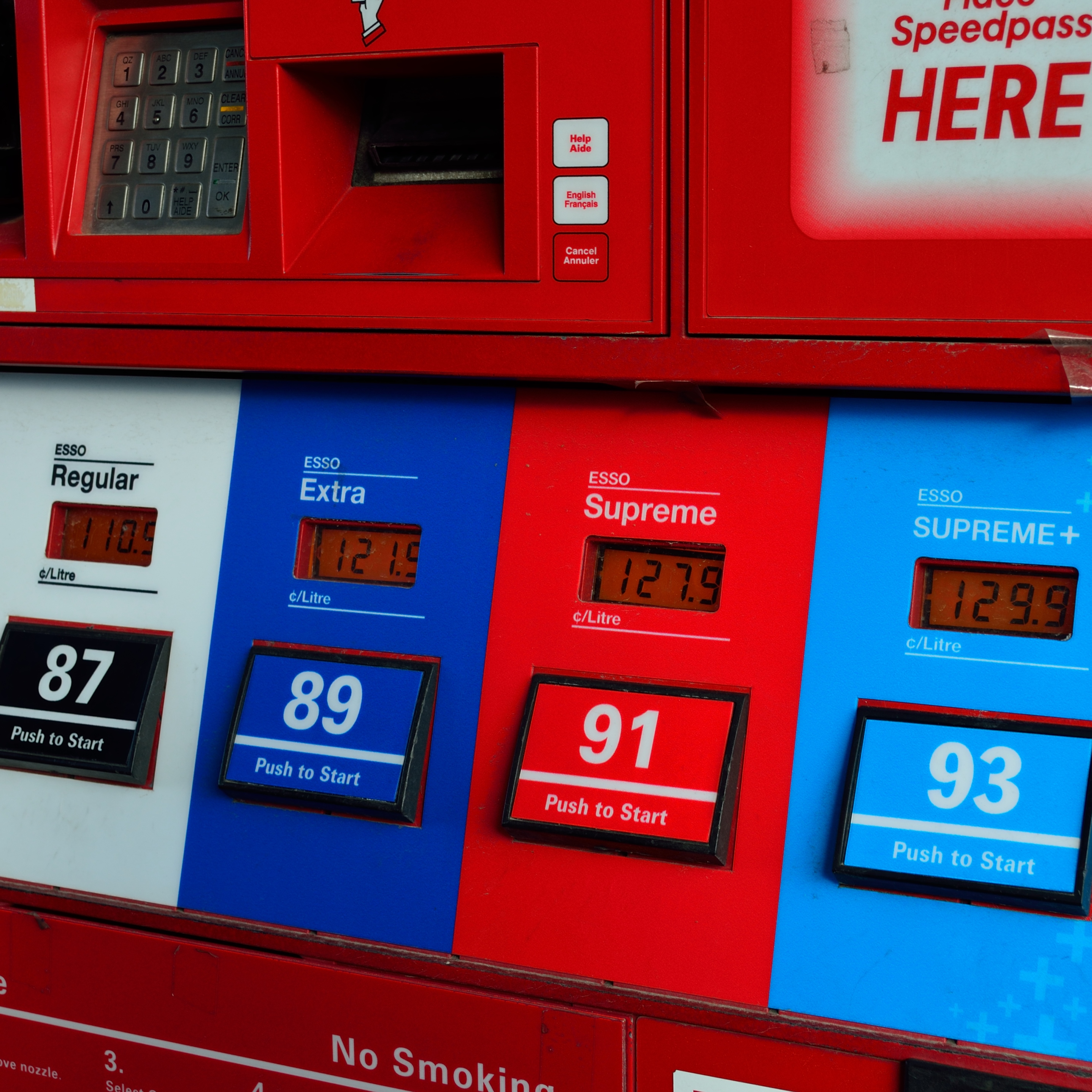Energy
Premium Gasoline Prices Retreat From 2-Decade High: How We Got There

Published:
Last Updated:

According to the latest numbers from the U.S. Energy Information Administration (EIA), 11.2% of all gasoline sold at gas stations in the United States is premium grade. So, with regular gasoline sales accounting for roughly 86.9% of total gasoline sales, the average motorist potentially hasn’t paid much attention to the price of premium gasoline. For the minority of motorists whose cars require premium gasoline, the recent spread between regular and premium has caused sticker shock. The spread has grown rapidly as of late, reaching a record high this past February that hasn’t been matched in over two decades.
From March 2002 to September 2014, the price of premium gasoline cost more than 15% of regular in only one brief period in late 2008, when the housing crisis sunk commodity prices. During that near 13-year period, premium gasoline cost only 9.2% more than regular in the United States. Over the past couple of years, the premium to regular spread had been building. This trend peaked two months ago in February, when premium gasoline cost 29.2% more than regular. With two decades of records erased, what has fundamentally changed to cause this new trend?
While premium grade gasoline accounting for 11.2% of all gasoline being sold may not sound very impressive, that figure represents improved demand from when sales bottomed out at 7.8% in June 2008. Before 2008, premium sales reached as high as almost 16% (2000) of total gasoline sales. From 2000 to late-2008, retail prices were continuing to rise as the retail monthly average for regular gasoline in the United States topped out at $4.04 per gallon in July 2008. These high prices forced many motorists to opt for the cheaper regular fuel grade. During the recession, economic hardship hurt not only premium sales, but all grades of gasoline saw sagging sales figures despite lower prices at the pump.
At a gas station, the only difference between regular, midgrade and premium grades of gasoline is the octane of the fuel. Typically, wholesalers have two base grades of gasoline blendstocks, a lower octane blendstock and higher octane blendstock. Before arriving to the gas station, the two grades of blendstocks and ethanol, along with detergent additives, are blended together to make a gas station’s final grade of gasoline for sale. Many would think to attribute higher premium gasoline prices to a higher cost of the higher octane blendstock that makes up a large portion of the premium gasoline grade. However, a Barclay’s report from June 2015 thinks that logic is backward. An overabundance of lower octane blendstock has widened the spread, not the rising price of higher octane blendstocks.
The shale oil revolution, which started to ramp up around 2011, brought an abundance of domestic crude oil to the doorsteps of U.S. refiners. However, not all crude is created equally; the properties of different crude grades greatly impact what products a refiner can make with the barrel. Barclay’s argued that the crude refiners received from the largest shale play, the Eagle Ford in Texas, is almost half lease condensate, a lighter hydrocarbon byproduct. When Eagle Ford barrels are refined, the results are a high yield of naphtha, a lower octane blendstock. The abundance of this easily accessible shale oil for refiners has added a surplus of lower octane blendstock that, unless refined further, sits in storage where it can later be blended into regular gasoline. Houston, a city with vast refining resources and great access to Eagle Ford crude, has seen one of the highest jumps in premium gasoline prices as a result.
Looking to the future of the premium and regular gasoline spread, the shale oil production that caused the spread to widen is reversing course. The shale oil production that provided an abundance of lower octane blendstock is now seeing a decline due to low crude prices that have discouraged further drilling. Less domestic production could encourage refiners to import crude with yields that would be more beneficial to premium gasoline supplies.
As the supply and demand dynamics for premium gasoline shift, so too has the market for gasoline additives. Last June, Shell Oil announced a new ultra-premium gasoline would be rolled out to its branded stations. The new fuel, dubbed Shell V-Power NiTRO+ Premium Gasoline, promised the “best total engine protection,” but it did not change the octane of the fuel, only retooled the additive. Despite only the additive being adjusted, the price of the premium gallon alone was expected to rise 15 to 25 cents at the time of the announcement. While Shell is only one brand, having nearly 11% of U.S. gas stations branded as Shell is a large enough of footprint to impact premium gasoline prices. As BP recently announced its new fuel line, it indicates growing competition among branded marketers to lure premium customers with shiny, new — yet, more expensive — detergent additives.
With demand, shale oil yield, and premium additive factors all contributing to the widening of the premium to regular gasoline spread, it’s almost if the stars aligned to drive this trend. Carmakers turning more to turbocharged engines to counter increasingly stringent fuel economy standards will compete with shale oil production declines to pull the premium versus regular gasoline spread in opposite directions. If shale production continues to decline, the future spread of premium to regular will be driven by which force wins out, but if shale production recovers, the spread could be even wider in the future.

By Patrick DeHaan, Senior Petroleum Analyst, GasBuddy
Thank you for reading! Have some feedback for us?
Contact the 24/7 Wall St. editorial team.